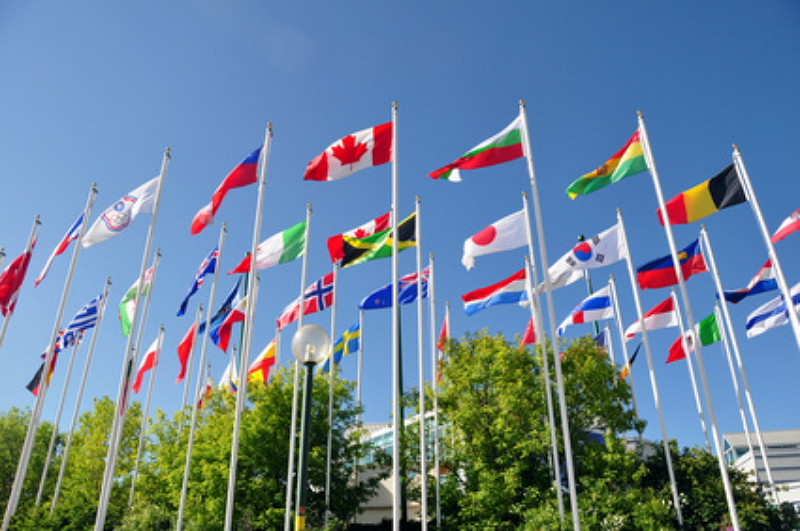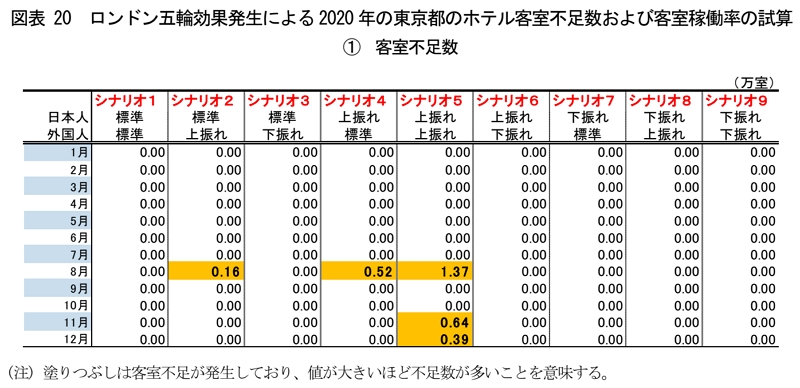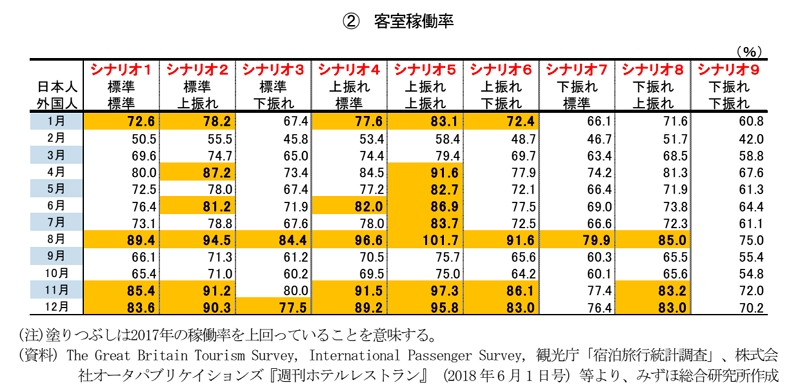
Mizuho Research Institute has estimated shortage of hotel rooms in Tokyo in the Olympic year 2020, taking account into expansion of the inbound travel market and increases in international flights and cruises to Japan.
The estimations are based on three benchmarks of ‘upward,’ ‘downward’ and ‘standard’ regarding both Japanese and foreigner traveler demands, giving nine sorts of benchmarks in total. For supply, the estimations are based on ‘standard’ reflecting open of new hotels by 2020 and ‘downward’ reflecting close of the existing hotels.
Demand on the standard benchmark is estimated to increase by 4.0% to about 530 million guests in 2020 compared to 2017, and on the upward benchmark, demand is expected to reach 600 million guests. Supply is estimated to add 4,600 rooms on the standard benchmark.
Taking account into so-called ‘crowding out effect by the Olympics’ in the London Olympics in 2012, which means that international visitors to London shifted from the Olympic month to other months because domestic travelers to London rapidly increased.
As a result, shortage of hotel rooms will not happen in the periods between January and July and between September and October on all of the benchmarks. In August of the Olympic month, up to 13,700 rooms are estimated to be short because domestic travelers may concentrate on Tokyo, and demand of international visitors who avoid August is expected to increase November or December, when shortage of rooms is possibly found.
The survey report also shows that shortage of rooms may be found in Shinjyuku, Shibuya and Bunkyo wards particularly.


By prefecture, shortage of rooms may be seen in Kyushu, Okinawa or Osaka through 2020 because of an increase in international visitors, and in the case of upward trend, shortage will be found in resort or city hotels, according to the report.
The report estimates that international visitors to Japan are expected to reach 44.02 million in 2020, which breaks down into 50% from NIEs, 30% from China, 10% from ASEAN and 10% from Europe, North America and Australia. The estimation, however, depends on extension of the air networks and an increase in cruise ships.





